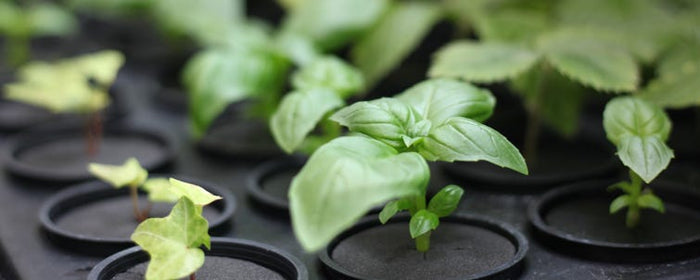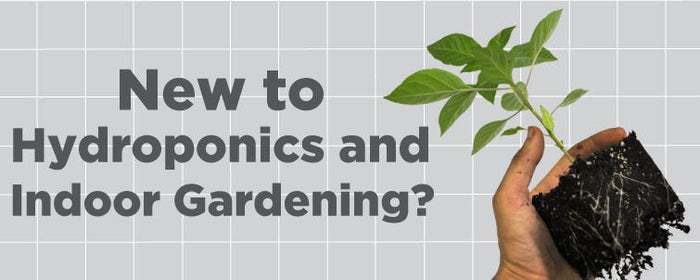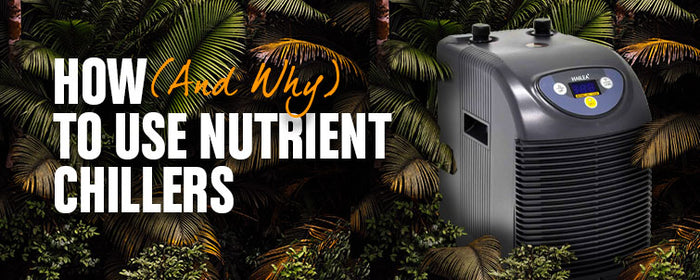
3 Ways to Crack a Seed: Germinate Seeds Super Fast.
What's the Best Way to Crack a Seed?
The best way to crack a seed is hotly debated by growers, everyone has their own preference, but which is the right way for you? There's an art to germinating seeds, various methods and essential factors for success.
Germination is the process where a seed sprouts and begins to grow. There's several ways to do this, each with their own intricacies, positives, and negatives. If you're just getting started, we'd recommend going with the good old fashioned tissue method as it offers the best visibility to keep check on what's going on.
Tissue Method: The Classic Approach
The tissue method, also known as the paper towel method, is a simple and effective way to germinate seeds. it requires very little equipment, offers high visibility and a controlled environment, allowing for easy monitoring and a high success rate in a space-efficient setup. However, it requires careful handling when transferring delicate sprouted seeds to the growing medium, which can potentially damage the fragile taproot.
How to germinate seeds using tissue:
- Moisten a paper towel with distilled water.
- Place seeds on one half of the towel, then fold it over to cover them.
- Store in a warm, dark place (like between two plates or in a sealable bag).
- Check daily and keep the towel moist.
- Once the taproot emerges (usually 1-5 days), carefully transfer to your growing medium.
Soil Method: Nature's Way
For a more natural approach, you can germinate seeds directly in soil. The soil method provides a natural environment that minimises handling and transplant shock, making it a simple and gentle option for beginners. On the downside, it can be challenging to maintain optimal moisture levels, potentially leading to issues with overwatering or underwatering.
How to germinate seeds using soil:
- Use a light, airy potting mix in small containers. (We'd recommend Tropic Light Mix.)
- Moisten the soil and create a small hole (about 1/4 inch deep).
- Place the seed in the hole and gently cover with soil.
- Keep the soil moist but not waterlogged.
- Maintain a warm environment (21-27°c).
- Seedlings should emerge in 5-10 days.
Rockwool Method: If You're Going into A Hydroponic System.
Rockwool plugs and cubes are popular among hydroponic growers and are much easier to transplant into hydroponic systems. Rockwool offers excellent water retention and aeration while providing a sterile, reusable medium with precise pH control. The main drawback is that rockwool can be less forgiving with pH and nutrient imbalances, requiring more careful monitoring, especially for novice growers.
How to germinate seeds using rockwool:
- Soak rockwool plugs in pH-balanced water (5.5-6.5) for several hours.
- Place a seed in each rooting plug.
- Keep plugs in a warm, humid environment (a good propagator is a must here).
- Once seedlings emerge, make sure that they get 18 hours of light per day.
- When roots start to show, transfer the plugs into rockwool cubes. This will allow the seedlings to develop further before being transplanted into a grow system.
How Much Light Do Seeds Need?
The lighting requirements for seeds change as they progress through germination and early growth stages:
During the initial germination phase, seeds prefer darkness:
- Seeds don't require light to sprout.
- Darkness mimics their natural underground environment.
- Keep seeds in a dark, warm place until the taproot emerges.
Once your seeds have sprouted and been transferred to their growing medium:
- Gradually introduce light to prevent shock.
- Start with 18-24 hours of gentle light per day.
- Use low-intensity LED or fluorescent lights to prevent overheating.
- Keep lights 4-6 inches away from seedlings to prevent stretching.
As your seedlings grow, you can adjust light intensity and duration based on your chosen growing method and plant strain.
Remember, successful cultivation starts with proper seed propagation. By mastering these techniques and understanding the light requirements, you're setting the stage for healthy, vigorous plants. Happy growing!




